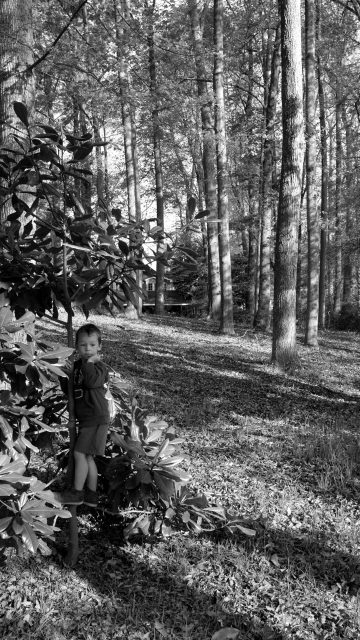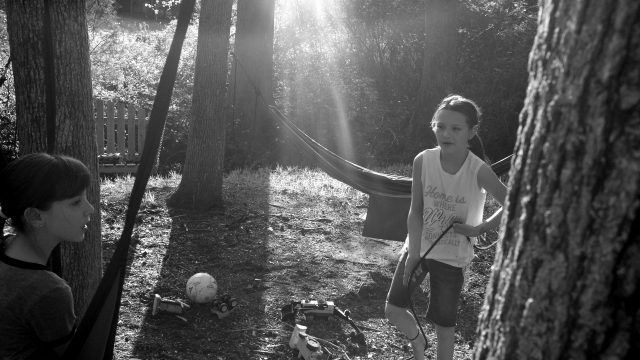Good Friday in our family is just as it would be in Poland: work, work, work, then more work, work, work, then church — not for Mass because that’s not celebrated on Good Friday, but rather the Liturgy of Good Friday — then back home for more work, work, and still more work.

K, after a small breakfast, spent most of the day in the kitchen. Doing what? I’m really not sure. Baking, I know. Fixing lunch. Other than that? I don’t know: I spent the entire morning giving the carport a good scrubbing, literally from top to bottom.
The kids got into the spirit, too, helping me by cleaning every single thing we’d taken out of the carport. E was a little upset because he felt at times he didn’t have a real part in helping out, and for him, that’s about the worst thing he can experience.

“Have I ever told you how happy it makes me that you are so eager to help?” I said at one point as he was using an improvised squeegee to pull away water that was puddling in the corner of the stairs to the kitchen from the carport.
“Yes.” I often play this little verbal game with him. “Have I ever told you…” followed by something I tell him all the time. If it’s “I love you,” he smiles and shouts, “Everybody knows that!” One thing I haven’t told him is how much joy it gives me that he consistently says “Yes” as opposed to “Yeah.”
“I hope you always stay that way,” I said.
“I will.” I really don’t doubt it.

At the church, it was like being in Poland again. Our pastor is a very traditional priest. (In most aspects, that is. He’s married with kids, which is rare among Catholic priests, but not so rare among Anglican priests who convert to Catholicism and after years get a dispensation from the pope for the discipline of celibacy. But that’s another story.) He’s really a “Say the red; do the black” priest, which means traditions that I haven’t seen since Poland are present everywhere, including the use of wooden clappers during Holy Thursday, Good Friday, and Holy Saturday liturgies. One site explains it thus:
In most liturgical services during the year, the consecration of the bread and wine is marked by the ringing of altar bells. The Easter Triduum, consisting of Holy Thursday, Good Friday, and Holy Saturday, is a time that is set apart from the rest of the liturgical calendar. Because these three days represent the three days that Jesus spent in his tomb before he was resurrected, they are traditionally marked by increased silence during mass. In traditional catholic worship services, the last time the altar bells are rung before Easter is on the evening of Holy Thursday. In between then and the Easter Vigil, a wooden clacker is used. A wooden clacker, sometimes called a wooden clapper, serves the same function as the altar bells. The clacker is sounded at the consecration of the gifts during the liturgy of the Eucharist, reminding the congregation of the awesome transformation that takes place at these moments.
So we knelt and stood, knelt and stood, kissed the cross, and felt at home.

Back at home, we got back to work, putting everything back in its proper place. K ran to the store for the thousandth time. (I’ve got a few store runs waiting for me tomorrow, without a doubt, but it wouldn’t be Holy Saturday otherwise.) The Boy finally got to use the pressure washer, helping clean out the cuts in the concrete portion of the driveway, which resulted in a wonderfully dirty little boy.

At bath time, looking at himself in the mirror, he said, “It was a great day!”
I think we all agree.
0 Comments